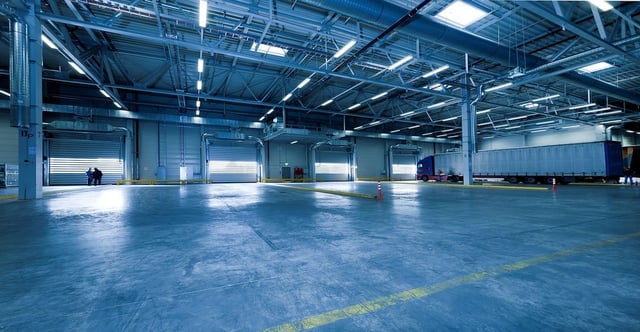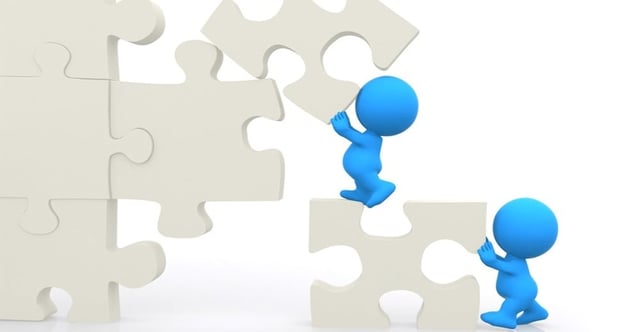Filter by Catalogue:
Products Found:
LOOKING FOR SOMETHING?
How to reduce the stockage costs thanks to scheduled regular audits
Published on:: 30.11.2018
3 Minutes read
Even though the warehouse and the stockage of the goods is the most important part of a building material resale, it could really be a pain in the neck for those in charge of its organization.
Far from the common idea of a dusty, dirty and humid place where the goods are piled in a nonsense way , the warehouse is nowadays the main core of the efficiency of the business.
Although the shipping service is not among the main focuses of a building material resale, we can take a cue from the company that collects and dispatches the goods to steal some good tricks and increase the efficiency of the warehouse (and therefore reduce the costs). For transport and forwarding companies, the warehouse is the focal point where to concentrate all the energies and provide the most efficient service to become competitive on the market. The warehouse is a living and buzzing business card for these companies and it must be divided into different specific areas for each phase, from the discharge of the goods to the load of the same for deliveries, passing through quality controls and compliance checks.
The companies that have decided to take this step forward and reached the goal to get the ISO certification, are subjected to periodic audits, ie checks on quality and maintenance of the compliance standards. The audits concerning the warehouse have the purpose of verifying that the pre-established standards are maintained and respected.
Here are some interesting information to put down as a marker.
The audit crosscheck : what to verify during the inspections
Planning what to check during the inspections it’s essential for a regular audit. A successful audit leads to a maintenance or even an improvement of the efficiency of the warehouse because it underlines the eventual mistakes done due to a wrong stockage of the goods or to a wrong collection and that may pave the way to oversights in the deliveries. SO , what the main points to check during a regular audit?
- the procedure of the reception of the goods
- the procedures concerning the quality standards
- where and how the goods are stocked
- where and how the picking of the goods is done
- how the pre-existing goods are computed
- the way the good will be shipped
Reception of the goods
Reception is the first phase. It is the moment when the goods arrive at the warehouse and must be unloaded from the vehicles. Different types of goods require different spaces, for example a tubular parcel require a larger space to be easily unloaded, while pallets are more practical to unload via docks or ramps directly connected to the inside of the warehouse. During the audit it is necessary to check that the procedures for the identification of the labelling and correspondence of the number of the parcels are carried out and that the storage is done in a clean and suitable place.
Quality Check
The in-house quality check vary according to the nature of the goods inspected. This may be free pass, random or on the totality of the goods. Free pass means no further checks beside a first one where the integrity of the goods is examined. Quality checks are essential to verify that any non-compliant goods will leave the warehouse. No returns means happy customers.
Stockage of the goods
In this phase the safety of the goods and the workers are under the microscope. The stockage area must complain with the safety standards regulations and it must not represent a danger. It must be easy to reach, a safe place for the integrity of the goods too and a suitable place that allows the transit of parcels and pallets.
Picking or colleciton of the goods
The audit regarding the picking of the goods check that the quantities in stock correspond to the ones physically stored in the warehouse, that the quantities collected match with the orders and the labelling coincide to the actual content.The standars of the packagings are tested too in order to guarantee safe packages
Check of the stock
The evolution from manual controls to computer systems has improved by far the control of the number of packages contained within the warehouse, reducing the cases of "false presences", ie pieces that appear on paper are available but they are actually missing, or on the contrary, unregistered stocks of items that seem to be out of stock are actually present in the warehouse. However, the phenomenon can still occur, so the internal periodic audit realign the number of stocks with the actual presence of the goods in stock.
Shipment audits
After the collection the good are ready to be shipped, but not before being properly checked and packed, to ensure their integrity during transport and reduce the chance of returns. The shipment audit verifies that the packaging procedures are done correctly, that all the pallets are balanced and compacted with special films and that this operation is carried out according to the standards. Furthermore, a check on the accuracy of the address of destination and the matching between the order and the goods is put into place.
Conclusions
Keeping the procedures for reception, storage and delivery of the goods under control, as well as quantities, are key points to improve the business of the resale. A fast reception of the goods, compliance with the regulations , fast returns management, a verified stock, fast deliveries will lead to a successful business. Check twice costs less than solve a problem.




